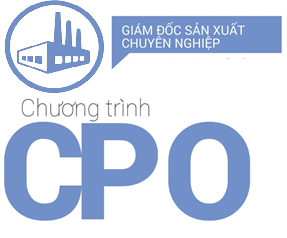22 Lý Tự Trọng, Minh Khai, Hồng Bàng, Hải Phòng.
itvc.haiphong@itvc-global.com
Chi tiết sản phẩm
- Hãng sản xuất: Huatec
- Model: HXRF Pocket 110
- Các phân tử đo: Ti, V, Cr, Mn, Fe, Co, Ni, Cu, Zn, Zr, Nb, Mo, Sn, Hf, Ta, W, Re, Pb, Bi, Se, Sb, Pb, Au và Hg
- Nguyên lý đo: phân tích XRF quang phổ huỳnh quang tia X
- Phân tử đo: S--U
- Phát hiện: advanced thermoelectric cooling Si-PIN semiconductor X-ray detector with high performance and high energy resolution
- Nguồn kích thích: ống X-ra mini 40kV/50μA y , Ag hoặc W anode targets
- Dữ liệu hiển thị: độ nét cao, độ phân giải cao PDA (Personal Digital Assistant), hệ điều hành Windows CE , giao tiếp Bluetooth c, người dùng gửi email
- Bộ nhớ: khả năng nhớ lớn thẻ SD
- Thời gian hoạt động pin: 08 hours
- Trọng lượng: 1.4 kilos(without battery)
- Kích thước: 260×325×125mm(L×H×W)
- Phần mềm cài đặt password
- Phụ kiện: bộ sạc 110v/220v, thẻ nhớ SD, card đọc thẻ nhớ SD, 2 pin 4000mAh Lithium, bộ sạc, phụ kiện PDA
Specifications
1.2. Figurative interface, flexible software operation, intuitive spectrum display and definite results
2.provided in the soft
Main characteristics of HXRF Pocket 110:
- The instrument is small, light and portable, providing rapid and non-destructive on-site analysis of the samples.
- Figurative interface, flexible software operation, intuitive spectrum display and definite results
- Several working curves are provided in the software, which can even be edited and renewed by the users upon test requirements.
- Optional GPS helps locate the tested sample when mining or surveying mines in the field.
- SD card with super large capacity is available. There is no limit of data storage.
- Attractive design and comfortable feel when held in hand
- The carrying case has high strength and high sealing capacity, drop and shock proof as well.
- Faster analysis and better accuracy, delivering lab-quality results
- Wide range of measurable elements: Ti, V, Cr, Mn, Fe, Co, Ni, Cu, Zn, Zr, Nb, Mo, Sn, Hf, Ta, W, Re, Pb, Bi, Se, Sb, Pb, Au and Hg
Broad application fields: RoHS testing, alloy analysis, geographic analysis, minerals analysis, precious metals analysis, heavy metals analysis in soils, and scrap metals recycling analysis
An introduction to HXRF Pocket 110 specifications:
- Working principle: XRF analysis exploiting X-ray Fluorescence Spectrometry
- Measurable elements: S--U
- Detector: advanced thermoelectric cooling Si-PIN semiconductor X-ray detector with high performance and high energy resolution
- Excitation source: mini 40kV/50μA X-ray tube, Ag or W anode targets
- Data display: high definition and high resolution PDA (Personal Digital Assistant), Windows CE operating system, Bluetooth communication, personal data handling and e-mail sending.
- Data storage: Large capacity SD card and SD card reader enable the data to store on PC and print out
- Battery operating time: operating time of two fully-charged Lithium batteries is no less than 8 hours
- Weight: 1.4 kilos(without battery)
- Overall size: 260×325×125mm(L×H×W)
- Ambient environment: temperature -20°C-50°C
- Safety feature: both PDA and software operations are protected by passwords. Unauthorized people are not allowed to operate.
Standard accessories: shock, pressure & water-proof carrying case with padlocks, 110v/220v general-purpose charger, large capacity SD memory card, SD card reader, two 4000mAh Lithium batteries, Lithium battery charger, PDA accessories, lab test stand (optional), etc
An Introduction to Minerals Analysis
HXRF Pocket 110 Handheld X-ray Fluorescence Spectrometer features rapid identification of mineral categories, auto qualitative and quantitative analysis of multi elements, different test options, free and unlimited adding of test modes and in-built intensity correction mode correcting deviation caused by different geometric shapes or uneven structural density. It is widely used in geography, metallurgy, rare earth, petroleum, environment monitoring, non-ferrous metals, food, agriculture, research institutes, colleges and mining enterprises.
HXRF Pocket 110 can be applied to:
Mineral exploration and survey
In-situ inspection of rocks, soil, sediments and ores
Drawing of atlas of mineral resources
Analysis of crude ore, ore concentrates and tails in washing process
Determination of grade of ores during the purchase of crude ores and ore concentrate
In-field measurement of archeology
An Introduction to Scrap Metals Recycling and Utilization
Scrap metals recycling is an indispensable aspect of circular economy, which has positive influence on environment protection and resources economization. Nowadays, nations around the world are propelling the cause of scrap metals recycling, waste electronic products reuse and circular economy transformation of steel and non-ferrous industries. China is currently making experiments on circular economy in key industries, areas, industrial parks, and cities.
Huatec HXRF Pocket 110 Handheld X-ray Fluorescence Spectrometer is designed for on-site measurement and rapid sorting of volume scrap metals. It allows the scrap dealers to make rapid and reliable judgment on the raw material deals. As a powerful weapon used for metal identification in scrap and regeneration metals recycling, it has contributed significantly to the development of renewable material industry.
HXRF Pocket 110 can be applied to:
Scrap metals recycling: Rare metals: gilt, silver plating, silver point, Hg, Mo, Ni and W; Non-ferrous metals: Cu, Al, stainless steel, lead soldering tin, tin dross, zinc, etc.
Waste electric appliances recycling: household appliances such as air-conditioner, refrigerator, washing machine, TV and refrigerator.
Waste commercial units recycling: central air conditioning system, refrigeration equipment, electric wire and cable, battery cell, electric motor, machine tool, elevator, jack box, transformer and boiler.
An Introduction to Precious Metals Analysis
Precious metals refer to the eight metal elements Au, Ag and Ru, Rh, Pd, Os, Ir, Pt in Pt family. Most of these metals have beautiful colors. They are normally un-reactive as they have strong resistance to chemicals. They are usually made into jewelries or souvenirs. They also have wide industrial application.
Huatec HXRF Pocket 110 Handheld X-ray Fluorescence Spectrometer can test grades and purity of the precious metals, identify grades of gemstones, perform 4C (Color, Clarity, Cut & Carat) grading of diamonds (purity and quality) and conduct routine physical, compositional and structural analysis of jewelries.
HXRF Pocket 110 can be applied to:
Measure concentration of precious metals Au, Pt, Ag and other jewelries
Precious metals and jewelries processing industries
Jewelry shops and test institutes
Banks and electro plating industry
HXRF Pocket 110 tests precious metal fineness for gold, silver, platinum, palladium, etc in accordance with National Standard GB 1887 Jewelry--Fineness of Precious Metal Alloys and Designation and GB/T 18043 Precious Metals Jewelries Content Non-destructive Test Method X-ray Fluorescence Spectrometry.
Name and introduction of the imitation jewelries
Gold filled: gold-filled jewelry is usually composed of a layer of thin gold leaf bonded to base metals such as brass, silver, zinc and nickel. Some gold-filled pieces have the look and feel of the gold. Jewelries of this kind are usually stamped with 34kf or 18kf.
Gold plating: gold plating is to deposit a thin layer of gold with thickness of about 10 micrometer onto the surface of another base metal, most often copper, silver, zinc, nickel or their alloys, by electrolyzing means. Jewelries of this kind are usually stamped with 18KGP and 24KG.
Pinchbeck: pinchbeck is a gold imitation material made by brass, most often plated with gold on the surface.
Rare-earth gold: rare-earth gold does not contain gold. It is an alloy composed of copper, nickel and a small amount of rare earth elements.
Ti gold: Ti gold is also an imitation jewelry and is seldom seen on the market. The base metal is usually coated with Ti to form a new substance TiN.










